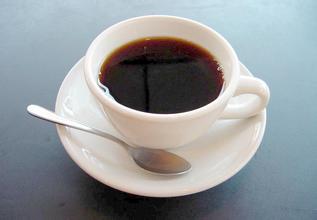Indonesian Coffee Flavor introduced in Cahayang Gan Manor
Coffee growing methods
During the Dutch colonial era, coffee cultivation was dominated by large manors. After World War II, it experienced nationalization and independence movement. Today, about 90% of Indonesia's coffee production is produced by small farmers.
coffee varieties
Initially, Indonesian coffee was Arabica, but leaf rust destroyed Arabica plantations in the late 18th century. Initially, the Dutch tried to grow Liberian coffee, and later, large-scale cultivation of Robusta coffee began.
Arabica now accounts for about 10-15% of Indonesia's coffee production, with the rest being Robusta. Liberica produces but is largely excluded from the coffee trade.
coffee harvest
Indonesia usually has two harvest seasons, the main crop occurs in September-October, and the second crop occurs in May-June.
Arabica will use manual picking, manual picking workers enjoy a minimum wage guarantee, on top of which there is performance pay.
Indonesian Coffee (1)
coffee processing
Java coffee is traditionally washed.
Sumatra and Sulawesi are known for their Indonesian wet-hulled method, known locally as Giling Basah.
The drying methods in coffee processing vary according to the situation: high-priced bed drying under canopy, terrace drying, roadside drying and other methods are used.
coffee flavor
Although flavors vary from region to region, Indonesian coffee is often mentioned, most often for its excellent fullness.

Important Notice :
前街咖啡 FrontStreet Coffee has moved to new addredd:
FrontStreet Coffee Address: 315,Donghua East Road,GuangZhou
Tel:020 38364473
- Prev

Costa Rican Coffee Manor area introduces Costa Rican coffee characteristics Costa Rican coffee style
There are many kinds of coffee here, but its industrial policy is large and cheap, so there is not much premium coffee, but it is a good choice for mixing other coffees. One of the most famous is Mountain Costa Rica Coffee, which tastes mellow and neutral. It can be boiled directly or mixed with other kinds of coffee beans to form a mixed coffee. It is also a good choice. Other kinds of Brazil
- Next

Indonesian Civet Coffee Estate Introduction Indonesian Coffee Flavor Arabica Coffee Estate
Cat poop coffee, also known as civet coffee. The official name of cat poop coffee is Kopi Luwak. Kopi means coffee in Indonesian and Luwak is a wild Indonesian civet. This coffee is called cat poop coffee because it is made from coffee beans picked from civet droppings. Cat poop coffee, Indonesia. Indonesia grows a lot of coffee.
Related
- Does Rose Summer choose Blue, Green or Red? Detailed explanation of Rose Summer Coffee plots and Classification in Panamanian Jade Manor
- What is the difference between the origin, producing area, processing plant, cooperative and manor of coffee beans?
- How fine does the espresso powder fit? how to grind the espresso?
- Sca coffee roasting degree color card coffee roasting degree 8 roasting color values what do you mean?
- The practice of lattes: how to make lattes at home
- Introduction to Indonesian Fine Coffee beans-- Java Coffee producing area of Indonesian Arabica Coffee
- How much will the flavor of light and medium roasted rose summer be expressed? What baking level is rose summer suitable for?
- Introduction to the characteristics of washing, sun-drying or wet-planing coffee commonly used in Mantenin, Indonesia
- Price characteristics of Arabica Coffee Bean Starbucks introduction to Manning Coffee Bean Taste producing area Variety Manor
- What is the authentic Yega flavor? What are the flavor characteristics of the really excellent Yejasuffi coffee beans?

